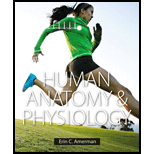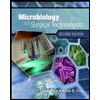
Human Anatomy & Physiology
1st Edition
ISBN: 9780805382952
Author: Erin C. Amerman
Publisher: PEARSON
expand_more
expand_more
format_list_bulleted
Question
Chapter 27, Problem 1AYKA
Summary Introduction
Case summary:
During the first trimester of pregnancy, Ms. Noble suddenly feels pain in the lower abdomen and is rushed to the hospital, to discover an ectopic pregnancy. The physician wants to do an immediate surgery but Ms. Noble asks him to wait as the embryo could simply move to the uterus.
Characters in the case:
Ms. Noble who has severe pain in the lower abdomen and the physician.
Adequate information:
Ms. Noble is discovered to have an ectopic pregnancy.
To determine:
To do surgery immediately or wait till the embryo move to the uterus.
Expert Solution & Answer
Want to see the full answer?
Check out a sample textbook solution
Students have asked these similar questions
Explain down bellow what happens to the cell in pictures not in words:
Decreased pH in mitochondria
Increased ATP
Decreased pH in cytosol
Increased hydrolysis
Decreasing glycogen and triglycerides
Increased MAP kinase activity
Poor ion transport → For each one:→ What normally happens?→ What is wrong now?→ How does it mess up the cell?
1.) Community Diversity:
The brown and orange line represent two different plant communities.
a. Which color represents the community with a higher species richness?
b. Which color represents the community with a higher species evenness?
Relative abundance
0.1
0.04
0.001
2 4 6
8
10 12 14 16 18 20 22 24
Rank abundance
c. What is the maximum value of the Simpson's diversity index (remember, Simpson's
index is D = p², Simpson's diversity index is 1-D)?
d. If the Simpson's diversity index equals 1, what does that mean about the number of
species and their relative abundance within community being assessed?
1.) Community Diversity:
The brown and orange line represent two different plant communities.
a. Which color represents the community with a higher species richness?
b. Which color represents the community with a higher species evenness?
Relative abundance
0.1
0.04
0.001
2 4 6
8
10 12 14 16 18 20 22 24
Rank abundance
c. What is the maximum value of the Simpson's diversity index (remember, Simpson's
index is D = p², Simpson's diversity index is 1-D)?
d. If the Simpson's diversity index equals 1, what does that mean about the number of
species and their relative abundance within community being assessed?
Chapter 27 Solutions
Human Anatomy & Physiology
Ch. 27.1 - 2. When does the postnatal period of life begin?
Ch. 27.2 - Prob. 1QCCh. 27.2 - What are the steps of fertilization?Ch. 27.2 - 3. What is the function of cleavage of the...Ch. 27.2 - How does a morula differ from a blastocyst?Ch. 27.2 - 5. What is the ultimate fate of the inner cell...Ch. 27.2 - 6. Which cell type secretes hCG?
Ch. 27.2 - 7. What are the functions of amniotic fluid?
Ch. 27.2 - 8. What are the main functions of each of the...Ch. 27.3 - Prob. 1QC
Ch. 27.3 - 2. Which cells form the three germ layers?
Ch. 27.3 - 3. What are the two types of embryonic folding?...Ch. 27.3 - What is the first major event that occurs during...Ch. 27.3 - Prob. 5QCCh. 27.4 - Prob. 1QCCh. 27.4 - Prob. 2QCCh. 27.4 - What specific changes occur in each month of fetal...Ch. 27.4 - Prob. 4QCCh. 27.5 - Prob. 1QCCh. 27.5 - Prob. 2QCCh. 27.5 - Which hormone stimulates the beginning of...Ch. 27.5 - Prob. 4QCCh. 27.6 - What are the criteria used to determine a newborns...Ch. 27.6 - Prob. 2QCCh. 27.6 - 3. Explain what happens to each structure in the...Ch. 27.6 - Prob. 4QCCh. 27.6 - What role do hormones play in the let-down reflex...Ch. 27.7 - What is the genome? How many chromosomes are in...Ch. 27.7 - Prob. 2QCCh. 27.7 - 3. How does a genotype differ from a phenotype?
Ch. 27.7 - Prob. 4QCCh. 27.7 - Prob. 5QCCh. 27.7 - 6. What is an X-linked disorder? How can a female...Ch. 27 - Match the correct time period of gestation with...Ch. 27 - Prob. 2CYRCh. 27 - Mark the following statements about fertilization...Ch. 27 - Prob. 4CYRCh. 27 - Number the sequence of events in fertilization....Ch. 27 - Prob. 6CYRCh. 27 - Match the extraembryonic membrane with the correct...Ch. 27 - Prob. 8CYRCh. 27 - Match the structures of the embryo with the...Ch. 27 - What are the two types of embryonic folding?Ch. 27 - Prob. 11CYRCh. 27 - Prob. 12CYRCh. 27 - Prob. 13CYRCh. 27 - Prob. 14CYRCh. 27 - Prob. 15CYRCh. 27 - Prob. 16CYRCh. 27 - 17. Fill in the blanks: The first ____________...Ch. 27 - Prob. 18CYRCh. 27 - Prob. 19CYRCh. 27 - Which pattern of inheritance includes examples of...Ch. 27 - Prob. 1CYUCh. 27 - Why is the single-celled zygote approximately the...Ch. 27 - Prob. 3CYUCh. 27 - Prob. 4CYUCh. 27 - Prob. 1AYKACh. 27 - Prob. 2AYKACh. 27 - Prob. 3AYKACh. 27 - Prob. 4AYKACh. 27 - Prob. 5AYKB
Knowledge Booster
Learn more about
Need a deep-dive on the concept behind this application? Look no further. Learn more about this topic, biology and related others by exploring similar questions and additional content below.Similar questions
- what measures can a mother to take to improve the produce of her to milk to her newborn baby ?arrow_forward1. Color the line that represents all ancestors of the Eastern white pine tree green (but only the ancestral line NOT shared with other organisms) 2. Oncle the last common ancestor of the Colorado blue spruce tree and Eastern white pine tree. 3. Put a box around the last common ancestor of the sugar maple tree and the dogwood tree. 4. Put a triangle around the last common ancestor of the red pine tree and the american holly bush. 5. Color the line that represents all ancestors of the Ponderosa pine tree red (including all shared ancestors). 6. Color the line that represents all ancestors of the American elm tree blue (including all shared ancestors). 7 Color the line that represents all ancestors of the Sabal palm tree purple (including all shared ancestors) 8. Using a yellow highlighter or colored pencil, circle the clade that includes all pine trees. 9. Using a orange highlighter or colored pencil, circle the clade that includes all gymnosperms 10. Can you tell…arrow_forwardYou have been hired as a public relations specialist to give invertebrates a good name. After all, they are much more than just creepy crawly bugs! Your first task though is to convince yourself that is true. The best way to do that is to start close to home. Find something in your house that is a product obtained directly from an invertebrate or only due to an invertebrate’s actions. Describe the product, its function and utility, as well as any human manufactured alternatives. Be sure to highlight the advantages of obtaining this directly from nature. Keep in mind, a product can be something you use, wear, eat, or enjoy for its visual appeal.arrow_forward
- Use the following tree diagram to answer Questions #8-10. 8) Which of the following two animals are the most closely related based on the tree to the left? a) Pig and camel b) Hippo and pig c) Deer and cow 9) CIRCLE on the tree diagram where the common ancestor between a hippo and a cow is. 10) Put a SQUARE on the tree diagram where the common ancestor between a pig and a peccary is.arrow_forwardExplain: Healthy Cell Function Overview→ Briefly describe how a healthy cell usually works: metabolism (ATP production), pH balance, glycogen storage, ion transport, enzymes, etc. Gene Mutation and Genetics Part→ Focus on the autosomal recessive mutation and explain: How gene mutation affects the cell. How autosomal inheritance works. Compare the normal and mutated gene sequences simply. → Talk about possible consequences of a faulty hydrolytic enzyme.arrow_forwardCan you fill out those termsarrow_forward
- Explain down bellow what happens to the cell: Decreased pH in mitochondria Increased ATP Decreased pH in cytosol Increased hydrolysis Decreasing glycogen and triglycerides Increased MAP kinase activity Poor ion transport → For each one:→ What normally happens?→ What is wrong now?→ How does it mess up the cell?arrow_forwardAn 1100 pound equine patient was given 20 mg/kg sucralfate 3 times a day, 2.8 mg/kg famotidine twice a day, and 10mg/kg doxycycline twice a day. Sucralfate comes as a 1 gm tablet, famotidine as 20 mg tablets, and doxycycline as 100mg tablets. All are in bottles of 100 tablets.How many total mg are needed for the patient and how many tablets of each would be needed to provide each dose?How many bottles of each would be needed to have available if this patient were to be on this drug regimen for 5 days?arrow_forwardThe patient needs a solution of 2.5% dextrose in Lactated Ringer’s solution to run at 75 ml/hr for at least the next 12hours. LRS comes in fluid bags of 500 ml, 1 Liter, 3 Liters and 5 Liters. How can a 2.5% solution be made by adding50% dextrose to the LRS?arrow_forward
- “Gretchen” was a 68-pound canine who came to the VMTH as small animal surgery patient. She receivedacepromazine, 0.2 mg/kg from a 10 mg/ml solution and oxymorphone, 0.08 mg/kg from a 1 mg/ml solution before surgery.What are the mechanisms of action of acepromazine and oxymorphone? Why would they be given together?How many mg provide each dose and how many ml of each of these solutions were given?arrow_forwardAfter surgery, “Gretchen” was put on carprofen, 1 mg/pound bid (twice a day). The tablets come in 25, 75 and 100 mgsizes. Which size tablet would be appropriate?What is the mechanism of action of carprofen?An outpatient prescription was written for her so she would have enough for 10 days. How many tablets did she need?What information needs to be on her out-patient prescription?arrow_forwardJoden Koepp olor in chickens is due to incomplete dominance. BB = Black chicken, WW = White BLOOD TYPES Arhite chicken is In humans, Rh positive blood is dominant (R) over Rh negative blood (r). A man with type 0, Rh positive blood (whose mother had Rh negative blood), marries a woman with type AB, Rh negative blood. Several children were born. is? R R Genotypes Phenotypes RRR RR Rr Rr 4/16 RR R RR RK Rr Rr 4/16 rr 3/4 Rh posi 1/4 Rh negu 1/2 Rr rr rr rrrr 88 888 75 e genotype of the man? the genotype of the woman? The mother of the man had type AB blood.arrow_forward
arrow_back_ios
SEE MORE QUESTIONS
arrow_forward_ios
Recommended textbooks for you
 Microbiology for Surgical Technologists (MindTap ...BiologyISBN:9781111306663Author:Margaret Rodriguez, Paul PricePublisher:Cengage Learning
Microbiology for Surgical Technologists (MindTap ...BiologyISBN:9781111306663Author:Margaret Rodriguez, Paul PricePublisher:Cengage Learning Human Physiology: From Cells to Systems (MindTap ...BiologyISBN:9781285866932Author:Lauralee SherwoodPublisher:Cengage Learning
Human Physiology: From Cells to Systems (MindTap ...BiologyISBN:9781285866932Author:Lauralee SherwoodPublisher:Cengage Learning Human Biology (MindTap Course List)BiologyISBN:9781305112100Author:Cecie Starr, Beverly McMillanPublisher:Cengage Learning
Human Biology (MindTap Course List)BiologyISBN:9781305112100Author:Cecie Starr, Beverly McMillanPublisher:Cengage Learning

Microbiology for Surgical Technologists (MindTap ...
Biology
ISBN:9781111306663
Author:Margaret Rodriguez, Paul Price
Publisher:Cengage Learning



Human Physiology: From Cells to Systems (MindTap ...
Biology
ISBN:9781285866932
Author:Lauralee Sherwood
Publisher:Cengage Learning

Human Biology (MindTap Course List)
Biology
ISBN:9781305112100
Author:Cecie Starr, Beverly McMillan
Publisher:Cengage Learning

Embryology | Fertilization, Cleavage, Blastulation; Author: Ninja Nerd;https://www.youtube.com/watch?v=8-KF0rnhKTU;License: Standard YouTube License, CC-BY